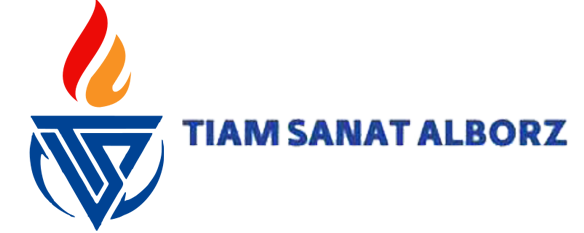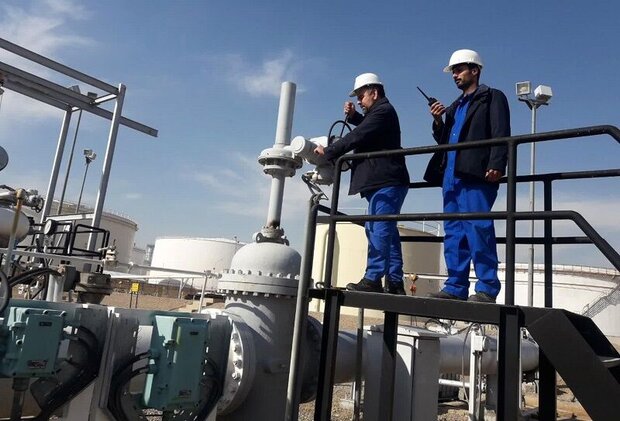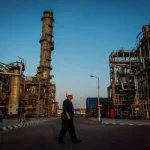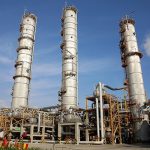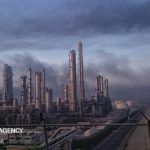According to Mehr reporter, the oil refining industry, apart from the specific profitability that depends on the quality of the products according to the production fuel standards, is an “intermediate link” all over the world that ensures the security of oil demand for production companies that provide upstream and downstream oil services. They have also integrated and provides. In addition, it guarantees the security of the feed supply of the petrochemical industry for the companies that are active in the downstream field. That is, the refining ring is of strategic importance since it is an intermediate ring that guarantees the economic profit of oil upstream and downstream. In general, fuel, which mainly includes gasoline, kerosene, diesel and liquid gas (LPG), constitutes about 50% of the products produced by refineries. Therefore, the profit margin of refineries, which depends on the difference between the price of crude oil and petroleum products, is tied to the demand for transportation fuels. For this reason, the world’s refineries have experienced fluctuations in their profit margins in recent years and will face various challenges in the coming years. According to the prediction of reliable research institutes, in the coming years, alternative fuels with negligible emissions and higher efficiency will replace the current common fuels, and due to this trend, the consumption and demand of fuel and refinery products in the world will reach its peak and its trend will decrease in the coming years. begins. Starting the process of reducing the demand for refined fuel products from 2030 Figure 1 shows the comparison of the production and consumption balance of naphtha and five fuel products of the world’s refineries during the years 2017 to 2023. As it is known, only the balance of the two products of diesel fuel and kerosene is negative, and in other words, the amount of consumption is more than the production, and in this case, diesel fuel has a greater difference. But for other products, as predicted until 2023, the amount of production is more than consumption, in this case, gasoline has a more positive balance than other products. Figure 1: Balance of production and consumption of naphtha and five refinery fuel products in the period from 2018 to 2023 in million tons (source: Wood Mackenzie) Figure 2 shows the balance of gasoline production and consumption in the regions of the world based on invested refining plans until 2023. As this graph shows, by 2030 only three regions of Southeast Asia, Africa and Latin America will have a negative gasoline balance, which is caused by the creation and expansion of transportation infrastructure in these countries. But in other regions of the world, due to the substitution of new fuels instead of gasoline, the level of production of this product has become positive. Figure 2: The balance of gasoline production and consumption in different regions of the world during the three periods of 2017, 2023, and 2030, based on the refining plans invested until 2023 (source: Wood Mackenzie) According to the Wood Mackenzie Research Center, the sale of electric cars will accelerate until 2030 with the reduction of battery prices and the spread of hybrid fuels, but it will take some time to have an impact on the global transport fleet, and during this time, electric cars will slow the growth of gasoline demand and They reduce diesel. Even with the expansion of electric cars in developed countries, the peak consumption of gasoline and diesel fuel will not occur before 2030. Production of petrochemicals, the future destination of world oil refining With the gradual decrease in demand for transportation fuels, strict environmental laws, and increasing demand for plastics and other petrochemicals in developing countries, the idea of a petrochemical refinery, which was proposed to directly produce petrochemicals from crude oil, has become more serious. By planning to build a petrochemical refinery, in addition to maintaining future markets, different countries will enjoy more profit margins by producing petrochemicals instead of producing fuels such as gasoline or liquefied gas. Another important point in this field is the greater resistance of petrochemical products to economic fluctuations compared to fuel. In other words, the more the value chain of petrochemical petroleum products is completed, the lower their impact on the price of crude oil will be. For example, in the early months of the Corona situation (spring 2019), the price of gasoline and other fuel products dropped significantly and at times reached below the price of crude oil, but in this situation, petrochemicals had more price stability. Figure 3, presented by the IEA Research Center, shows the per capita demand for crude oil for fuel products and petrochemicals of the plastic group between the two periods of 2017 and the projected amount until 2050. As it is known, the per capita oil demand for fuel products has decreased significantly, and in the same way, the per capita oil demand for petrochemicals is facing an increasing trend. In addition, another important point that emerges from this graph is that the per capita demand for plastic materials will surpass that of fuel products in all four mentioned regions until 2050. In general, in countries with higher income per capita, the consumption of plastic materials is about 20 times that of low-income economies, which indicates a significant global growth capacity. Figure 3: Per capita comparison of crude oil demand for fuel products and plastic materials in 2017 and 2050 in four important regions of the world (source: International Energy Agency) The way forward for Iran’s oil refining industry / Intensification of dependence or acquisition of future petrochemical markets? Today, the refinery has become an important global trend and a turning point in oil refining, and the world’s oil companies are increasing their petrochemical production capacity. This trend is followed seriously in some neighboring and Asian countries. For example, in the city of Yanbu, Saudi Arabia, the state-owned companies Aramco and SABIC
